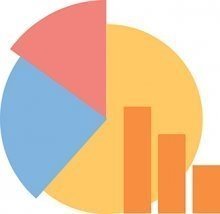By the Numbers: 9 January 2023
5.7%
The percentage of "a national cohort of veterans using VA healthcare from October 2016–September 2019" who were using "eleven VA-covered therapies: chiropractic care, acupuncture, Battlefield Acupuncture, biofeedback, clinical hypnosis, guided imagery, massage therapy, meditation, Tai Chi/Qigong, and yoga" by 2019, according to a recently published study in the Journal of General Internal Medicine -- We Built it, But Did They Come: Veterans’ Use of VA Healthcare System-Provided Complementary and Integrative Health Approaches.
Veterans’ use of these approaches increased 70% in three years. By 2019, use was 5.7% among all VA patients, but highest among patients with chronic musculoskeletal pain (13.9%), post-traumatic stress disorder (PTSD; 10.6%), depression (10.4%), anxiety (10.2%), or obesity (7.8%). The approach used varied by age and race/ethnicity, with women being uniformly more likely than men to use each approach. Patients having chronic musculoskeletal pain, obesity, anxiety, depression, or PTSD were more likely than others to use each of the approaches.
5.7%
The percentage of "a national cohort of veterans using VA healthcare from October 2016–September 2019" who were using "eleven VA-covered therapies: chiropractic care, acupuncture, Battlefield Acupuncture, biofeedback, clinical hypnosis, guided imagery, massage therapy, meditation, Tai Chi/Qigong, and yoga" by 2019, according to a recently published study in the Journal of General Internal Medicine -- We Built it, But Did They Come: Veterans’ Use of VA Healthcare System-Provided Complementary and Integrative Health Approaches.
Veterans’ use of these approaches increased 70% in three years. By 2019, use was 5.7% among all VA patients, but highest among patients with chronic musculoskeletal pain (13.9%), post-traumatic stress disorder (PTSD; 10.6%), depression (10.4%), anxiety (10.2%), or obesity (7.8%). The approach used varied by age and race/ethnicity, with women being uniformly more likely than men to use each approach. Patients having chronic musculoskeletal pain, obesity, anxiety, depression, or PTSD were more likely than others to use each of the approaches.

